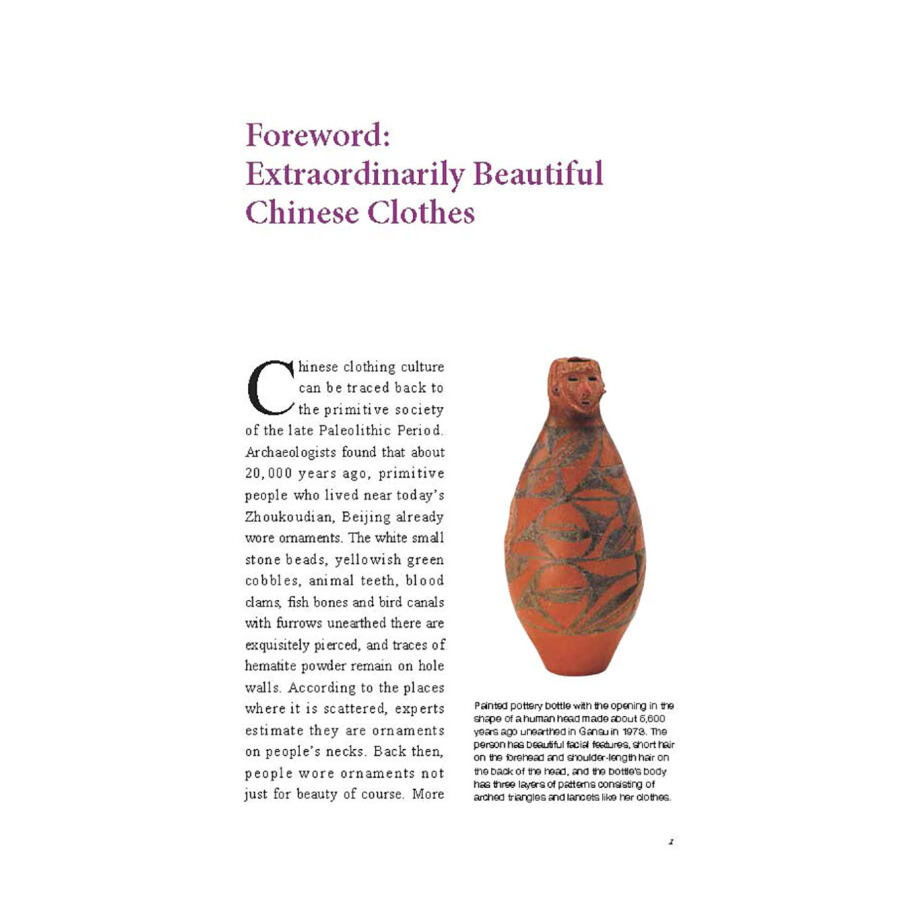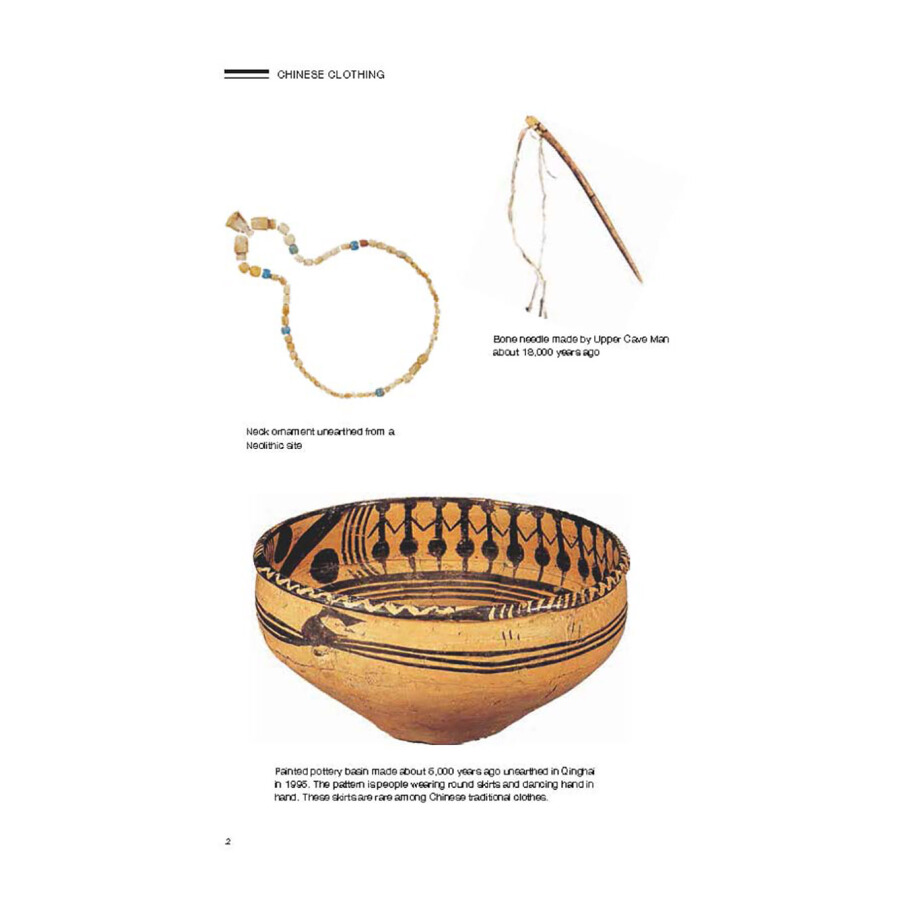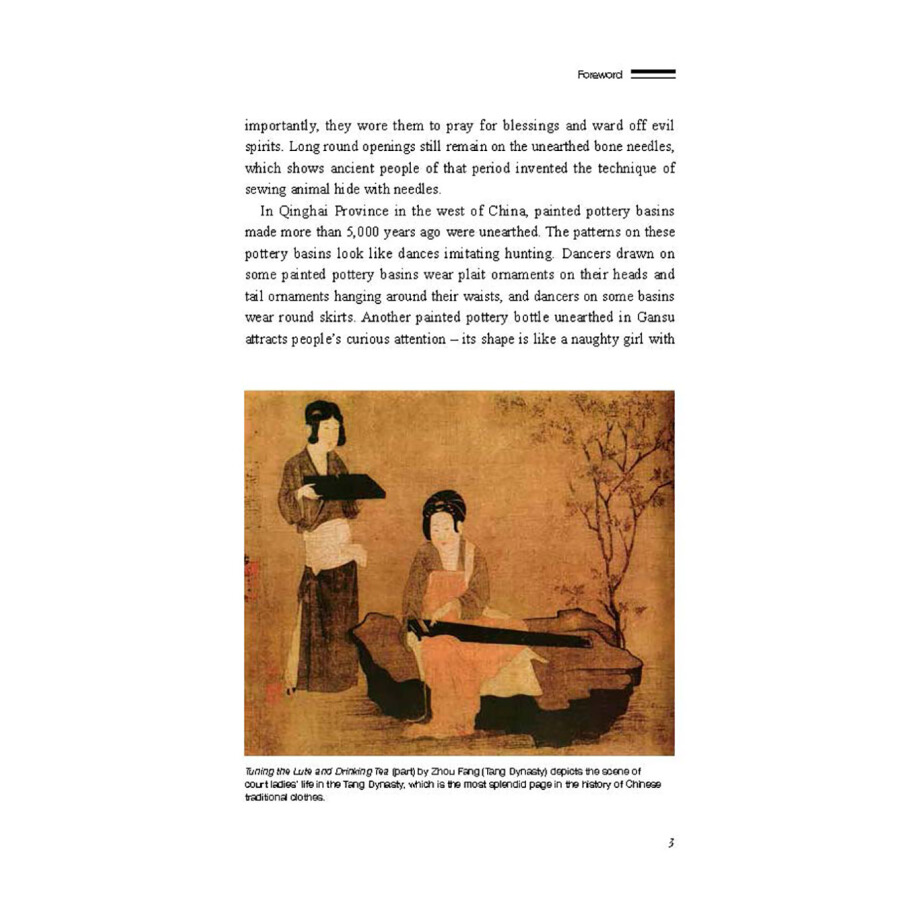Details
In the Chinese way of describing the necessities of life, clothing ranks at the top of “clothing, food, shelter and means of travel”, which shows its important place in life. In this country with a long history of garments and ornaments, with integration of ethnic groups and cultural exchange between the East and West, clothing styles and customs have been evolving since ancient times. Almost from the day when clothes emerged, people’s social status, living customs, aesthetical tastes and various cultural concepts were integrated into them. Clothes are the most straightforward and realistic reflection of social and historical scenes. In this sense, the clothing history is also a vivid history of the development of civilization.
About Author
Hua Mei, professor at Tianjin Normal University, the head of the Hua Mei Clothing Ornament Culturology Study Institute and the former dean of the College of Arts and Design. She began to teach the Chinese clothing history in 1983, established the new discipline of clothing ornament culturology study in 1994, took charge of three national cultural projects of the Social Science Fund and the Ministry of Education, and was the main lecturer for the national classic resource sharing course Chinese and Western Clothing History. Now she has published 56 monographs. Her representative works are Human Costume and Ornament Culturology, Clothing Ornaments and Chinese Culture, Chinese Clothing History, Western Clothing History and Clothing Aesthetics. Many of them have been translated into English, French, Spanish, Japanese, Korean and Arabic and published abroad. She was invited to teach China’s clothing ornament culture at Nara Women’s University in Japan, University of Fashion in Lyon, France, Institute of France in Paris, New Zealand Academy of Fashion Design and Rangsit University in Thailand.
Sample Pages Preview



Chinese clothing culture can be traced back to the primitive society of the late Paleolithic Period. Archaeologists found that about 20,000 years ago, primitive people who lived near today’s Zhoukoudian, Beijing already wore ornaments. The white small stone beads, yellowish green cobbles, animal teeth, blood clams, fish bones and bird canals with furrows unearthed there are n
exquisitely pierced, and traces of hematite powder remain on hole walls. According to the places n
where it is scattered, experts estimate they are ornaments on people’s necks. Back then, people wore ornaments not just for beauty of course. More importantly, they wore them to pray for blessings and ward off evil spirits. Long round openings still remain on the unearthed bone needles, which shows ancient people of that period invented the technique of sewing animal hide with needles. n
In Qinghai Province in the west of China, painted pottery basins made more than 5,000 years ago were unearthed. The patterns on these pottery basins look like dances imitating hunting. Dancers drawn on some painted pottery basins wear plait ornaments on their heads and tail ornaments hanging around their waists, and dancers on some basins wear round skirts. Another painted pottery bottle unearthed in Gansu attracts people’s curious attention – its shape is like a naughty girl with short hair on the forehead above the eyebrows, shoulder-length hair on the back of the head, clearly discernable facial features and continuous patterns below the neck consisting of three layers of oblique lines and arc lines, triangles, etc. Perhaps the person who made this pottery bottle was a real and lovely girl, and the patterns depict the beautiful wedding gown worn by her.


